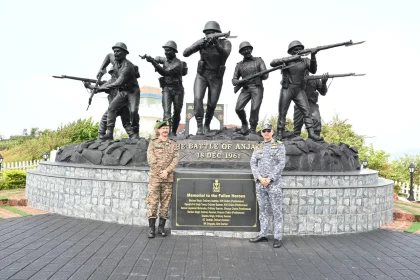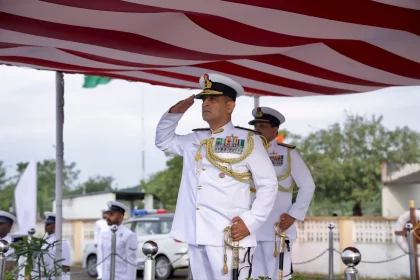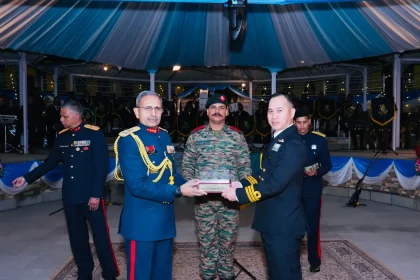65th National Defence College Course Delegation Visits Naval Base Karwar
The interaction at Naval Base Karwar underscored the Navy’s continuing efforts to promote jointness, strategic understanding, and global partnerships in…
Rear Admiral Sritanu Guru Assumes Command as Flag Officer Commanding Gujarat Naval Area (FOGNA)
Change of Command Ceremony marks leadership transition in Gujarat, Daman & Diu Naval Area.
Vice Admiral Susheel Menon Assumes Charge as Chief of Staff, Eastern Naval Command
Distinguished Gunnery and Missiles Specialist takes over after successful tenure as Flag Officer Commanding Eastern Fleet.
Commander Ronie Chowpoo Leads INS Khanjar Team at 37th Biennial Battalion Commanders’ Conference of Kumaon and Naga Regiments
The continued engagement of INS Khanjar with the Kumaon and Naga Regiments further strengthens this tradition, reflecting the Indian Armed…
AWC Mhow Hosts ‘Human Library’ to Inspire Youth with Stories of Courage and Achievement
Real-life achievers from shooting, mountaineering, and archery share motivational journeys with young participants.
Raj Kumar Arora Assumes Charge as Financial Advisor (Defence Services)
Senior IDAS officer Raj Kumar Arora takes over as Financial Advisor (Defence Services), bringing decades of expertise in defence finance…






